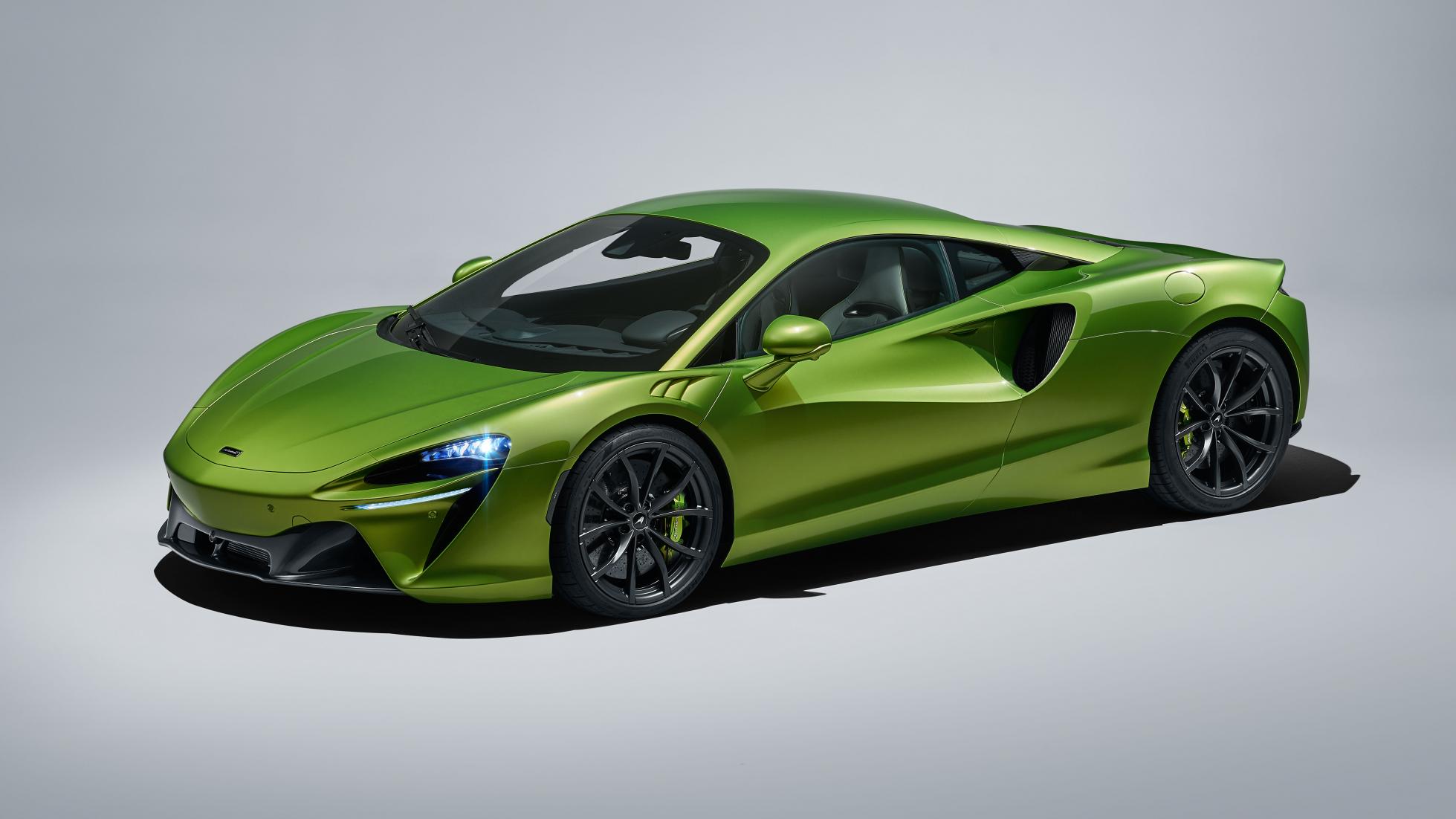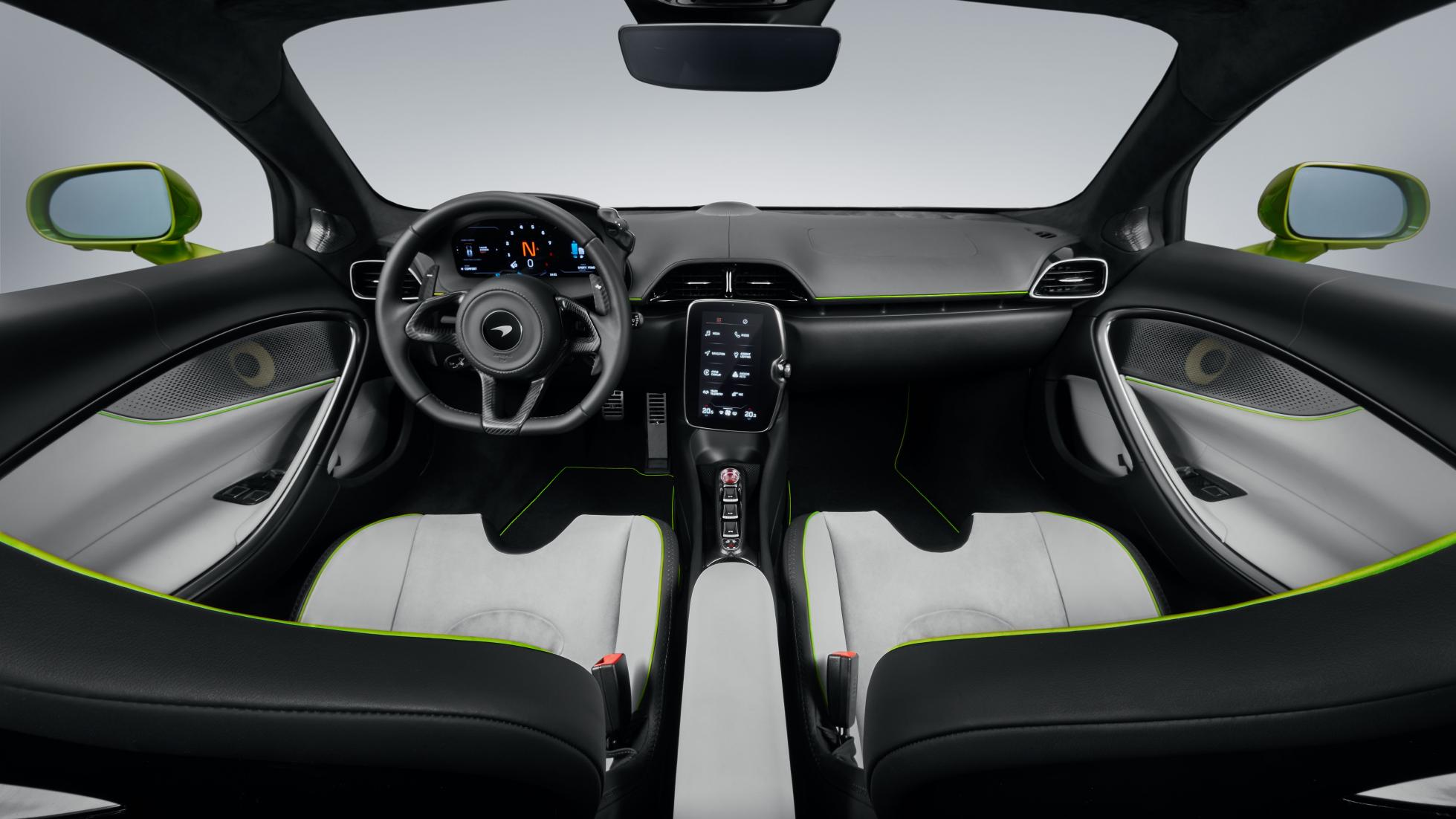
McLaren has announced its latest plug-in hybrid (PHEV) supercar, the Artura, and it's packed to the rafters with tech.
It's the company's first PHEV since the limited-production McLaren P1, which launched back in 2012, and ditches almost every facet of its V8-engine models in favor of an all-new design and internals that reflect the era of electrification.
Being a PHEV means the Artura uses batteries to power an electric motor alongside conventional fuel to power an internal combustion engine (ICE).
It's not as nuts as the P1 – a 217mph hypercar you'd struggle to pick up nowadays for less than $1.5 million – but the Artura still packs a punch with a 0-60mph acceleration of just 3 seconds and a top speed of 205mph, thanks to a 671bhp twin-turbo V6 engine and 92bhp electric motor.
- Mercedes reveals giant 56-inch, AI-enabled 'Hyperscreen'
- The Audi e-Tron GT is the most powerful Audi EV to date
- Everything we know about the Apple Car
It’s also considerably less expensive than its older brother at £182,500 (around $250,000 or AU$ 330,000). We wouldn't be as bold as to say that's a reasonable price, but for a brand with the billionaire pedigree of McLaren it's certainly not the choke-inducing price tag we've come to expect of its supercars.
The Artura blends thrilling, class-leading performance, dynamics and driver-engagement. Today, we unveiled our all-new, next-generation Hybrid supercar - if you haven't seen Artura yet, you can still get up to speed on the following link: https://t.co/kMfD2UHcoq#McLarenArtura pic.twitter.com/JsAC2Nr8yRFebruary 17, 2021
The Artura is pretty light, too, weighing just 27kg more than a 720S, especially impressive considering its powertrain features both an ICE and a 7.4kWh battery.
That's largely thanks to McLaren's all-new ultra-light chassis – made from McLaren Carbon Fibre Lightweight Architecture (MCLA) – which allows for a roomier cabin yet a shorter wheelbase than most of its other cars. It's final weight is 1,498kg – that's almost a tonne less than a Bentley Continental GT, for comparison.
Get daily insight, inspiration and deals in your inbox
Sign up for breaking news, reviews, opinion, top tech deals, and more.
The hybrid nature of the Artura means it can cruise for up to 19 miles in a pure EV electric vehicle) mode thanks to the battery, and its combined fuel economy exceeds 50mpg - although with all that power underfoot, you'll need to be feather-light with your input to keep things ecnomical.
That's not ground-breaking numbers for a PHEV – 19 miles might get you to the shops and back – but it's likely McLaren is saving the more impressive battery-powered figures for its in-development all-electric GT, scheduled to arrive in 2025.
Gadgets galore
As we've come to expect from McLaren, the Artura is a candy store of fancy technology.
Standard fare gizmos like adaptive LED headlights, cruise control, autonomous emergency braking, road-sign recognition and lane departure warnings all feature here, while more geeky elements – like tires that contain chips which tell the car its optimum temperature, pressure and safety settings – make the Artura feel like a very new-generation PHEV.

Inside, engineers have worked hard to improve noise, vibration and harshness levels, and the car is now capable of engine-off running (a feature not typical of the manufacturer). McLaren says the Artura will be quiet when cruising, but that drivers can expect a roaring soundtrack at high speeds.
Perhaps most interesting is its smartphone-like, vertically-oriented screen unit, angled towards the driver to complement a new and improved infotainment system in the narrow centre console - something previous McLarens have fallen down on.
Major controls, including the chassis and powertrain modes, are now controlled via fingertip buttons that can be easily operated without a driver's hands leaving the wheel.
All in all, then, the McLaren Artura looks set to offer drivers a unique alternative to the more conventional supercars on the market. It's not cheap, of course, but at least it's no P1.
- Elon Musk wants to make the Tesla Roadster a hover car

Axel is TechRadar's UK-based Phones Editor, reporting on everything from the latest Apple developments to newest AI breakthroughs as part of the site's Mobile Computing vertical. Having previously written for publications including Esquire and FourFourTwo, Axel is well-versed in the applications of technology beyond the desktop, and his coverage extends from general reporting and analysis to in-depth interviews and opinion. Axel studied for a degree in English Literature at the University of Warwick before joining TechRadar in 2020, where he then earned an NCTJ qualification as part of the company’s inaugural digital training scheme.